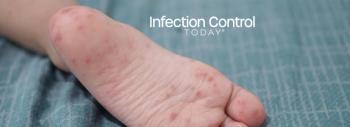
Study Shows Hospital Infections in Cancer Patients Climbed, Deaths Declined
In a nationwide study of patients undergoing surgery for cancer, Henry Ford Hospital researchers have found that while infections during hospital stays increased during a 10-year period, the death rate from those infections dropped.
The findings suggest that diagnosis and management of healthcare-associated infection, or HAI, have improved over time.
The study appears in the current issue of the journal Cancer.
"Cancer patients often have surgery as part of their treatment and are at increased risk for developing healthcare-associated infection," says study lead author Jesse Sammon, DO, with Henry Ford's Vattikuti Urology Institute. "Ironically, they have often been left out of previous studies of healthcare-associated infection following surgery precisely because they're at higher risk of developing these infections."
HAIs are one of the most common and dangerous adverse consequences of hospitalization but they are preventable. Under pressure from growing public awareness, at least 27 states have enacted laws as of 2010, requiring health systems and hospitals to report HAI rates.
This increased public awareness was due in large part to the 1999 publication of the Institute of Medicine's landmark report; To Err is Human, which compelled medicine to examine the depth and breadth of the HAI problem. And the medical field responded by adopting numerous guidelines and programs to better detect and prevent such infections.
The Henry Ford study suggests that those initiatives are working.
Drawing on the Nationwide Inpatient Sample database, researchers identified more than 2.5 million patients who had major cancer surgery for one of eight types of malignancies between 1999 and 2009. These included colectomy, cystectomy, esophagectomy, gastrectomy, hysterectomy, pneumonectomy, pancreatectomy and prostatectomy.
Among the patients, Sammon and his colleagues found that the incidence of HAI related to these surgeries increased 2.7 percent per year during the 10-year study period; but at the same time, the rate of deaths linked to the HAIs dropped 1.3 percent per year.
While those results are encouraging, Sammon says they are tempered by additional findings that socio-demographic factors such as race and insurance status continue to be serious national health policy concerns.
When compared to white patients, African-Americans showed a 26 percent increase in HAI.
And if a patient's healthcare payments were made through Medicare or Medicaid or if the patient was uninsured the odds of HAI went up 18 percent to 67 percent.
Source:Â Henry Ford Health System
Newsletter
Stay prepared and protected with Infection Control Today's newsletter, delivering essential updates, best practices, and expert insights for infection preventionists.






